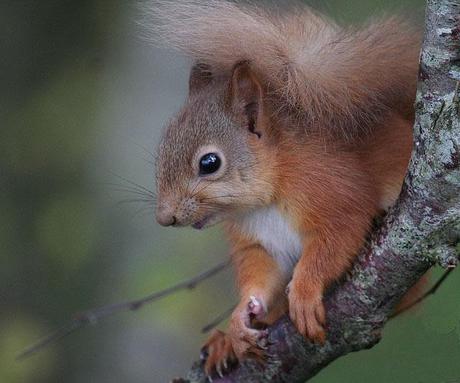
The natural world boasts many awe inspiring ambassadors. The polar bear, the giant panda, and the Sumatran tiger are all stunning species acting as worthy symbols of conservation. When we see these creatures we immediately recognize their peril and most of us would be able to name one or two organisations playing a key role in their protection.
But what about the struggles and strife closer to home? British wildlife has been in a steady state of decline for the best part of a century and we are at significant risk of losing some of our most iconic species. In 1994 our government launched a campaign known as the United Kingdom Biodiversity Action Plan (BAP) to identify and monitor endangered species and habitats. At the time of its declaration, the report highlighted 391 species and 45 habitats as priorities for conservation efforts and in line with a Convention on Biological Diversity (CBD) set a target “to achieve by 2010 a significant reduction of the current rate of biodiversity loss”.
The figures for priority species and habitats now stand at 1,150 and 65 respectively.
Whilst reviews show that there have been some success stories within the history of BAP, the general consensus among UK conservation organisations is that the CBD targets have been missed. In May 2011 the European Union, in conjunction with CBD reassessed their aims committing to “halting the loss of biodiversity and the degradation of ecosystem services in the EU by 2020, and restoring them in so far as feasible.”
In general, British conservation tends to work better when species have specific or confined ranges that can be easily targeted. The otter for example is one of the species that seems to be benefiting from its action plan. Cleaner rivers, legal protection, and dedicated reintroduction efforts have seen otter numbers rise to a presence of between 65 and 80% across many or their historical home ranges.
However, when we take a species like the hedgehog with their relatively non-specific range of the UK, targeting conservation efforts becomes ambiguous. In the 1950’s estimates numbered 50 million, in 1995 this was down to 1.5 million, and in 2007 they were worryingly added to the BAP species list. Habitat fragmentation is thought to be a huge problem, urbanism creeps into our rural patches year on year reducing natural habitats. Furthermore, smaller more isolated gardens coupled with an increase in home pesticides like slug pellets means many gardens end up repelling our spiky friends. Finally, with habitats in patches and gardens cut off, many individuals are forced to cross our roads with devastating consequences. One decade alone (1990-2001) yielded road losses thought to have halved the hog population.
Red Squirrels are one of the species whose plight is more familiar. Outcompeted by the larger, more hardy (non-native!) grey, their numbers have taken a nose dive by 50% in 50 years. 75% of the remaining reds are located in Scotland and as for the rest of the UK, island habitats such as Anglesey and the Isle of Wight are likely to be the only hope. Not only are they aggressive competitors but the greys also carry an enteric disease known as squirrel poxvirus (SQPV) fatal to our humble reds, meaning strict vigilance to keep greys out is the only likely scenario for small scale preservation. Sadly, current estimates predict the red squirrel to be extinct within the next 20 years.
House sparrows, bottle-nosed dolphins, ladybirds, Atlantic salmon, hazel dormice, great crested newts, basking sharks, pine martins, water voles, natterjack toads, garden bumblebees… to name but a few are all species currently at risk. These creatures great and small genuinely helped inspire and nurture my love for the natural world. The possibility that future generations will be robbed of that privilege is in my mind unacceptable.
So what can we do in the here and now to circumvent this crisis? Well that’s the beauty of conservation in your own country, it really is on your doorstep and in your back gardens. I recommend getting familiar with UK conservation initiatives, then exploring your local trusts for priorities that directly affect your area. If you are passionate about a particular species look them up, there are almost certainly others that share your feelings and there will be great tips available to help you encourage biodiversity.
It is very easy to assume that members of parliament, government officials and policy makers should be taking control of this situation. But the stark and simple fact is that our beautiful country has been irreversibly transformed, preservation by the individual is now our strongest force.
Don’t mourn losses, prevent them.
- The Peoples Trust for Endangered Species (PTES)
- The Observer Ethical Awards
- The Royal Society for the Protection of Birds
- The British Trust for Conservation Volunteers (BTCV)
- The Bat Conservation Trust
- The British Hedgehog Preservation Society
- Natural England
- UK BAP
Article image- Alastair Rae, 2008
